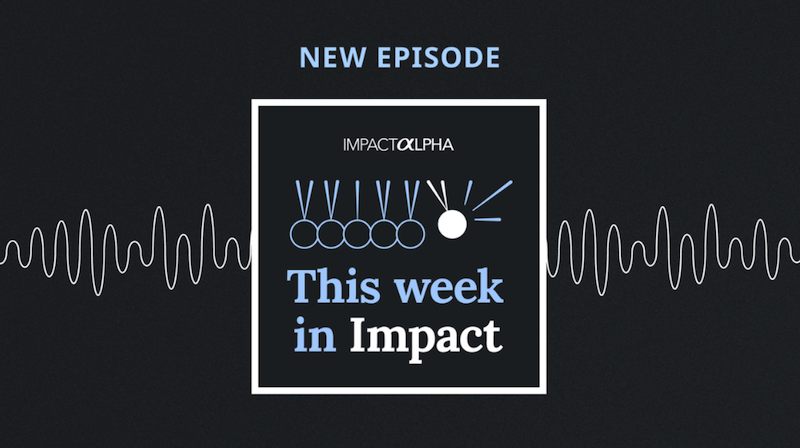Social impact bonds have the potential to radically improve our abilities to tackle some of society’s most complex and costliest social issues. Because they fund preventive measures – and repay private investors from the avoided public costs – they are part of a broader push to “pay for success” in challenges long viewed as intractable.
Schizophrenia, a debilitating mental health diagnosis affecting approximately two million Americans, would seem to be a perfect use-case to address with a social impact bond. Annual direct treatment and indirect costs of $87 billion means schizophrenia represents one of the costliest disease burdens in the US. At the same time, promising preventive interventions are woefully underfunded.
In a project at Northwestern University’s Kellogg School of Management, we found that there is an opportunity for a schizophrenia prevention social impact bond, but it is still early for private investors to buy-in. This independent study grew out of Prof. David Chen’s Impact Investing course, in which students explored how finance could catalyze change on a chosen social issue.
Our hypothesis was that a SIB would be an appropriate financing mechanism to reduce utilization of costly emergency and inpatient health services for schizophrenic patients. Investments made through the SIB structure would aim to improve mental health care delivery by adequately funding clinically proven early treatment practices and intervention programs and reducing total healthcare cost related to mental health disorder.
Disease Burden
Schizophrenia affects an estimated one percent of the US population, with 100,000 new diagnoses every year. The impact of schizophrenia on a young person’s health can lead to social, academic, and vocational challenges – setbacks that can interrupt the formation of personal independence, identity and values.
Additionally, roughly 10 percent of people with schizophrenia commit suicide, as compared to one percent for the general population. Suicide is the third leading cause of death among mid-adolescents. Over 90 percent of children and adolescents who commit suicide have a mental health condition. High cost of care and stigma surrounding mental illness prevents many individuals from receiving help.
Lack of treatment perpetuates the problem: 57 percent of adults with mental illness receive no treatment, and in some states, that number increases to 70 percent. The annual emergency department utilization rate for patients with schizophrenia was 14 times higher than in the general population. Of adults with a mental health illness, nearly one in five are uninsured, more than double the general population.
Without consistent, proper treatment or support, jail and correctional systems are becoming the largest providers of treatment for serious mental illness.
Ounce of Prevention
There are tremendous opportunities to do things differently in treating schizophrenia. Preventing the progression of schizophrenia is the linchpin of solutions to the myriad of thorny social, economic and health problems.
Early prevention can reduce the incidence rate (delay or prevent) of a first acute psychotic event by approximately 50 percent, according to a report jointly issued by the World Health Organization and the International Early Psychosis Association. A meta-analysis of early prevention research published in the Elsevier Medical Journal found the overall the risk reduction after one year was 54 percent; over two to four years, risk was reduced by 37 percent.
The government (state and federal) has historically been the largest funder of mental health services. However, recent budgetary constraints have resulted in lower levels of government funding for mental health services, and this trend is likely to continue. The 2015 Federal Research Budget for Schizophrenia was $241 million, compared to $5.4 billion for cancer and $3 billion for HIV/AIDS. Despite similar burdens of disability, schizophrenia research budgets lag behind those of cancer and HIV/AIDS.
The cost of schizophrenia is borne by many constituents, including but not limited to: families and patients, Medicaid, commercial insurers, hospitals, government agencies (VHA, Police, Correction System), foundations/charities, and NGOs.
Medicaid is the largest payer for schizophrenic services, covering approximately 67 percent of the insured, schizophrenic population or $39.6 billion in annual national spend.
Pay-for-Success
Our proposed social impact bond would be structured to provide specialized early treatment, prevention and promotion of cognitive health to individuals at risk of a first psychotic event. Services are holistic and include, but not limited to, medication management (if necessary), individual and group therapy, family services, vocational and educational support, exercise therapy, peer support and community outreach.
If you can delay or prevent the first onset, you’ve reduced the backend costs of hospitalization. Because of their potential savings, SIB looked at commercial insurers as the payor of the bond. Increased coverage of young adults (up to 26) as part of Affordable Care Act aligns with the pilot age cohort. Additionally, commercial insurers have a higher tolerance than governmental insurers (i.e., Medicare and Medicaid) to risk and innovation.
We analyzed a potential cohort of 500, 17- to 27-year-olds with key risk factors: direct family history of schizophrenia; social withdrawal, drop in functioning, increased sensitivity and anxiety; and environmental trauma (reported sexual violence, reported domestic abuse).
Based on the 50 percent prevention in year 1 and the five-year reduction of incidence of 25 percent, the social impact bond generates enough returns to cover the costs of the projects. While there is no cure of schizophrenia, changing the life cycle of a schizophrenic patient, over 10 years, generates a low but positive internal rate of return of approximately 5 to 7 percent, as well as a better life for the individual.
Market Development
Our study showed that there is indeed an opportunity for a schizophrenic social impact bond, but it is still early. Creating a market takes time.
A successful SIB must exhibit a strong and proven evidenced-based intervention to build a market case for battling a social challenge. All savings, and thus repayments, are generated by the ability to change outcomes. Program operators must be able to provide quantifiable evidence supporting their approach. In the case of schizophrenia, there is still not a significant amount of clinical evidence to meet the burden of proof to make a schizophrenia-prevention SIB fully viable.
Additionally, transparency and good faith between constituents are key during this volatile process. SIB creators need strong commitment from clinicians, providers, governments, non-profits, private investors, foundations, intermediaries, and payers. Quantifying outcomes and “the value of a life” is a thorny issue that traditional players might not be willing to tackle.
Not everyone will welcome the transparency required. Placing a spotlight on non-profits and comparing the effectiveness of their methodologies is dangerous for both non-profits and policy makers. Future efforts to create a schizophrenia SIB should work to develop these relationships and connections from all stakeholders.
Given the early-stage, we believe foundations focused on mental health will need to fund pre-market activities to prove efficacy before private investors would take a look. There is still significant execution and efficacy risk for a private investor, so a foundation could support a “trial period” SIB. While advancing the mission to prevent schizophrenia, the trial could validate the hypotheses, build the evidence base, establish processes and refine risks for a full-scale SIB. Future efforts would need to:
- Find a willing group of constituents, including a foundation to back the trial period SIB;
- Identify and start a dialogue with all possible payors;
- Work with constituents to formalize SIB operational processes and due diligence.
Not all problems can or should be solved by social impact bonds. Only select policy problems can be addressed by a payment-for-success contract; fewer still can be financed with a SIB. Our exploration suggests there is an opportunity to finance schizophrenia prevention with a social impact bond. The jury is still out on whether the opportunity will be suitable for private investors. Let’s stage a trial to find out.
[seperator style=”style1″]Disclosure[/seperator]
The authors give special thanks to Dave Chen for mentoring and guiding us on the project and to the Kellogg School of Management at Northwestern University for sponsoring the study.











